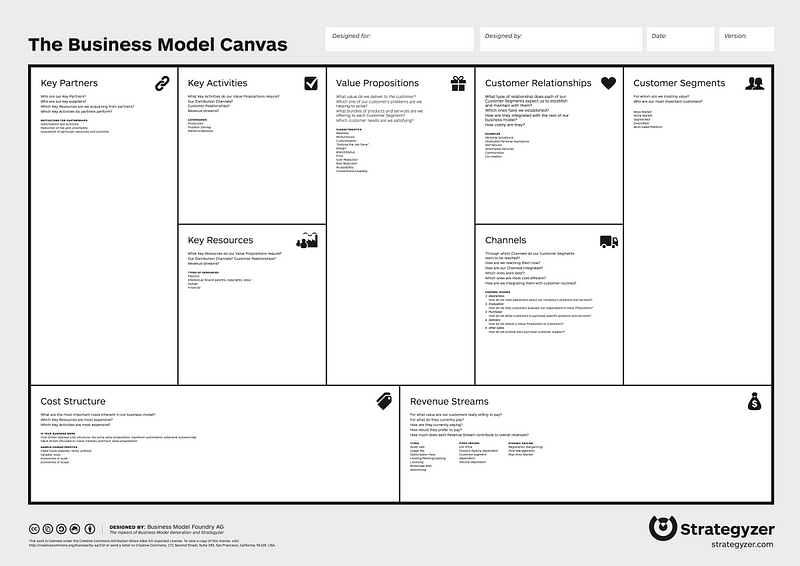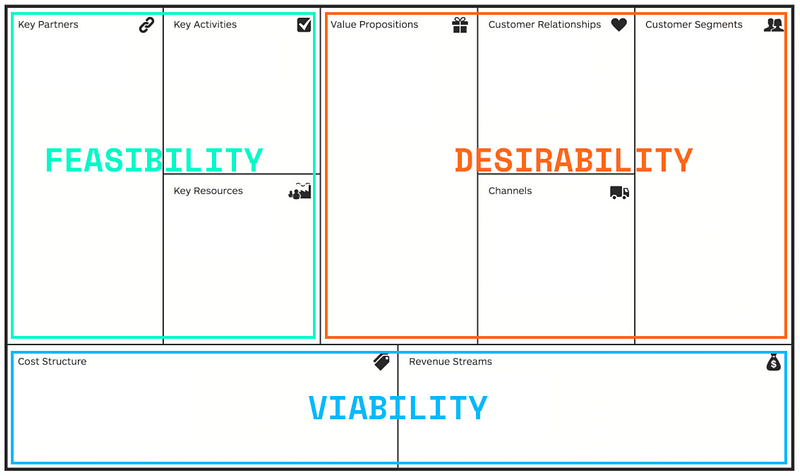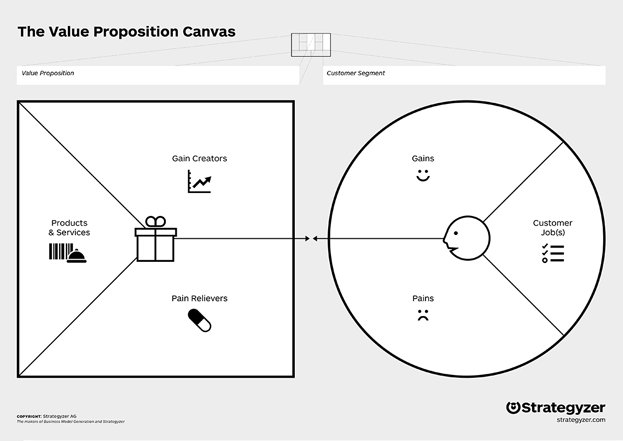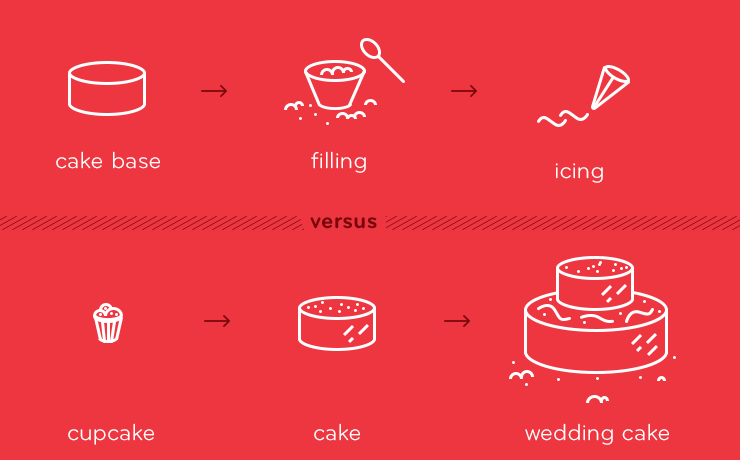Today’s entrepreneurs have many tools at their disposal to help them validate complex business models. The most popular is Alexander Osterwalder’s Business Model Canvas (BMC), which is also what our instructors and coaches use here at District 3 with our startups.

However, even with only nine building blocks, the BMC can still be overwhelming in the early days when you are trying to understand whether your research or discovery is worth making into a business in the first place.
In this article, we will help you get started with thinking about business models by applying a mental model from design thinking, a process used by innovators to develop meaningful solutions to problems. This model suggests that innovation happens at the intersection of desirability, feasibility, and viability and was first described by world-renown design firm IDEO.
This approach, which IDEO calls design thinking, brings together what is desirable from a human point of view with what is technologically feasible and economically viable. It also allows people who aren’t trained as designers to use creative tools to address a vast range of challenges. — Tim Brown, CEO of IDEO

These three factors are an excellent way of simplifying what you need to think about for creating any innovation. For developing a business model, we only need to tweak the definitions slightly to see how they fit into telling a story of a validated business model:

Desirability, feasibility, and viability as the overlay on the business model canvas
Our slightly modified definitions reveal how the blocks of the canvas can be grouped. The right side, which focuses on your customers, will fall into desirability. On the left, how you create your solution, are in feasibility. Finally, the economics of your business on the bottom make up the viability.

During the customer development process, you will have to consider which areas of the business model canvas the insights from your interviews belong in. Early on it might be difficult to parse a particular quote from a customer as something that might be a hypothesis in the relationships block or value propositions, and forcing this might hinder your validation progress.
Grouping the blocks gives you a place to categorize your insights broadly, so that they’re ready for more precise examination later on. This will guide your reflections when you are validating your model by helping you focus on who to interview, what to ask, and how to test your hypothesis.
Customer Desirability: Who are my customers? What do they need?
The four blocks in this category are:
- Customer segments
- Value propositions
- Channels
- Customer relationships
When validating your customer desirability, your goal will be to talk to as many potential customers as you can. You will try to understand what troubles them currently and what would make them happy, commonly referred to as their “pains and gains”. We recommend a companion tool to the business model canvas by Strategyzer called the Value Proposition Canvas to help you during this process.

Working to understand if there’s any desirability for your idea will also involve showing your customers some simple prototypes of your solution. These don’t have to be complete, working versions of what you’re thinking. A simple sketch on paper or a cardboard cutout may suffice.
It may well be that an interview intended to be with a customer will end up being more about key partners, but that’s okay — we’ll cluster those insights into feasibility and move onto to the next potential customer interview.
Delivery Feasibility: How will I build the solution? Who will help me?
The three blocks in this category are:
- Key resources
- Key activities
- Key partners
You may assume that there’s no interviewing to be done to understand your feasibility but this is far from the truth. You need to start with some introspection to understand if you have all the assets needed to deliver the solution. If not, will you hire someone? Will you form a partnership? How about a co-founder?
Even if it might seem like you have all the resources in place, it’s crucial that you test this by building prototypes. Once again, you don’t want to start by building an overly complex and complete version of your final product. Instead, start small to avoid spending too much money and time on a wrong hypothesis.
“Start with a cupcake” is a sound prototyping mental model for this. It states that in order to test whether a customer will like a wedding cake, start with making a cupcake version as opposed to building the cake and the icing separately as they have no value as standalone products.

Economic Viability: How will I make this a sustainable business?
The two blocks in this category are:
- Revenue streams
- Cost Structure
Finally, to test the viability of your business model you will need to build some financial models, consult with your mentors or experts, and talk with your feasibility partners.
This step may be more complicated to those without business backgrounds as forecasting revenues and costs are not always as straight forward as how much you will charge your customer minus the costs of the materials.
You need to think about salaries, costs of acquiring a customer through sales and marketing, your total addressable market, and many more factors. The Kauffman Founders School has an excellent course for a primer on financial modelling.

The innovation model works beyond validation
We have learned from using this model with our startups that it not only helps them greatly when they are getting started with a business, but also later on after they’ve acquired customers. It’s also useful when you want to take a step back and get an overview of your business or tell a simple story of what your startup does, be that for an investor pitch, hiring new talent, or for sales.
Next time you are considering starting a new company or creating a new product in your existing business, you can think about these three factors to see if it’s worth pursuing. You can ask yourself:
- Will this idea be desirable to any customer segments?
- How feasible is the delivery of this solution?
- How will I manage the finances to make it viable?
